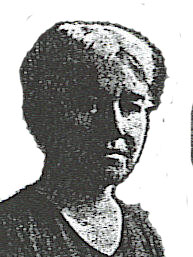
Constance Mayfield Rourke, Biographical Author
Constance Mayfield Rourke was born in 1885 in Grand Rapids, Michigan.
Her widowed mother, Constance D. Rourke, was instrumental in introducing the
idea of kindergarten education to Grand Rapids in the 1890's. Thus
Constance M. was brought up in progressive ideas. She graduated from
Central High School and went east to Vassar College, a bastion of progressive
thinking. The taught at Vassar for several years but was not convinced
that teaching was her vocation.
Ms Rourke returned to Grand Rapids in 1915. She was taught that privilege
conferred responsibility and she most often focused her efforts on the arts and
cultural development. Her life was devoted to examining the cultural
materials and traditions available for writers and artists.
In 1934 she organized the National FolkArt Festival in St. Louis and served as
editor of the Federal Art Project's Index of American Design in 1937.
In 1939, her friend, Linda Butler, and Constance began a Friends of American Art
group which was associated with the Grand Rapids Art Gallery (now the Grand
Rapids Art Museum) at 230 E. Fulton Street. The group sponsored two
exhibitions within the following year.
A very disciplined writer, she set aside the hour between 8 a.m. and 4 p.m. to
study and writing and would never answer the phone during those hours. Yet
she was very active socially. She became involved in politics in the
1930's, in the local antifascist crusade by joining the Committee to Defend
America by Aiding the Allies and raised money to aid causes. Just before
her death, the Soviet Army invaded Finland her final fundraising efforts were on
behalf of the Finns.
In March of 1941, she fell on ice and suffered a head injury. She died two
weeks later at the age of 55. Her major study of American culture was left
uncompleted.
She wrote two biographies.
One on Davy Crockett in 1935 and she took a modern approach to biography. She did well in explaining how much of what we know of Crockett is drawn from myth making (by him and others). She makes an interesting portrait and gives the read a clear understanding of life on the frontier. The critics of the time said that almost no children on earth would be interested in the book.
The biography, "Audubon", brought some light to this famous naturalist and artist, who though known by his name, is not well-known as a person. There is much confusion as to his birth. The book devotes a good deal of attention to the nature that Audubon loved and explored and to his artistic style. She staunchly defends the man, painter and naturalist.
Other books that she wrote: American Humor: A Study of the National Character; Charles Sheeler: Artist in the American Tradition; The Roots of American Culture.